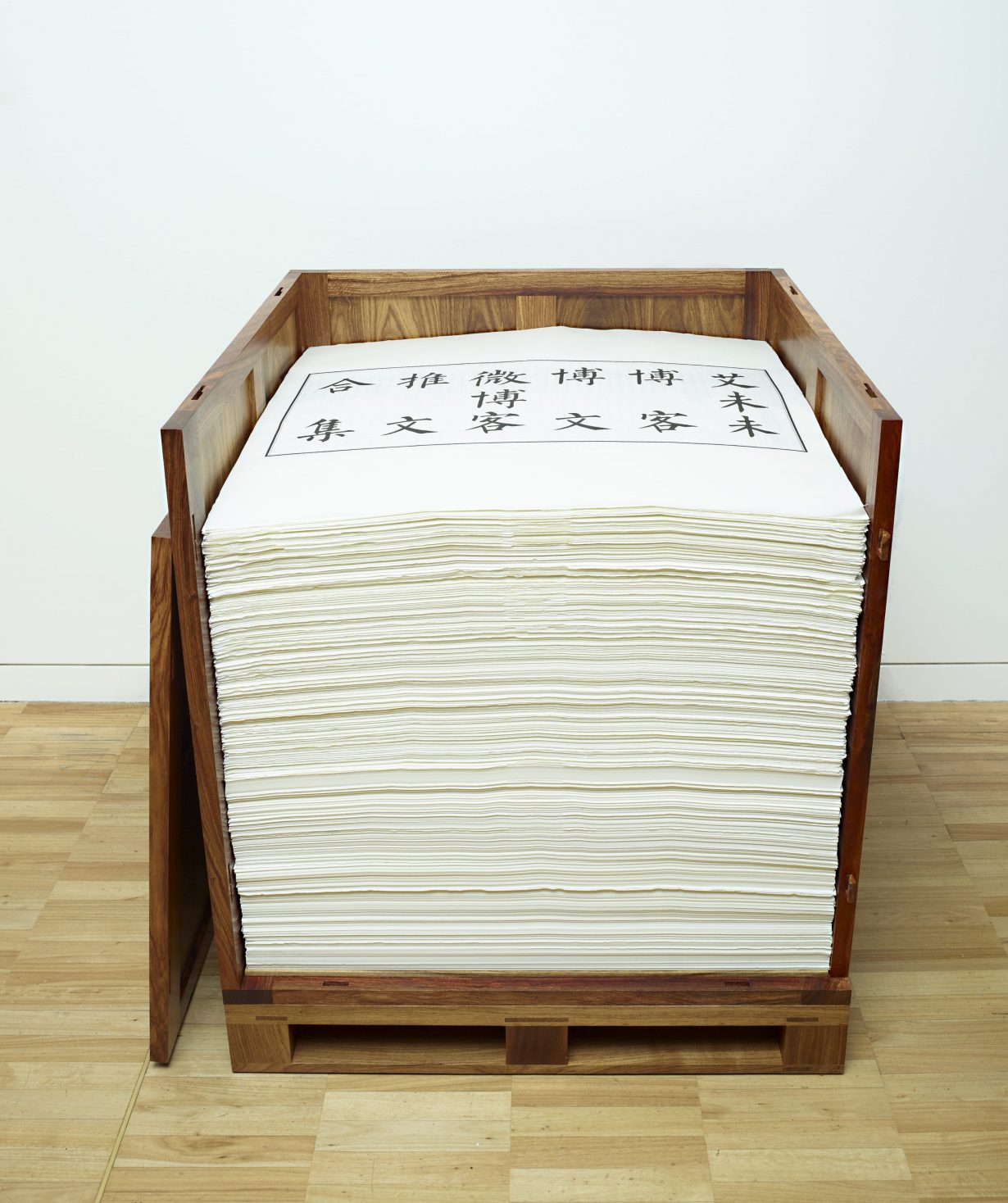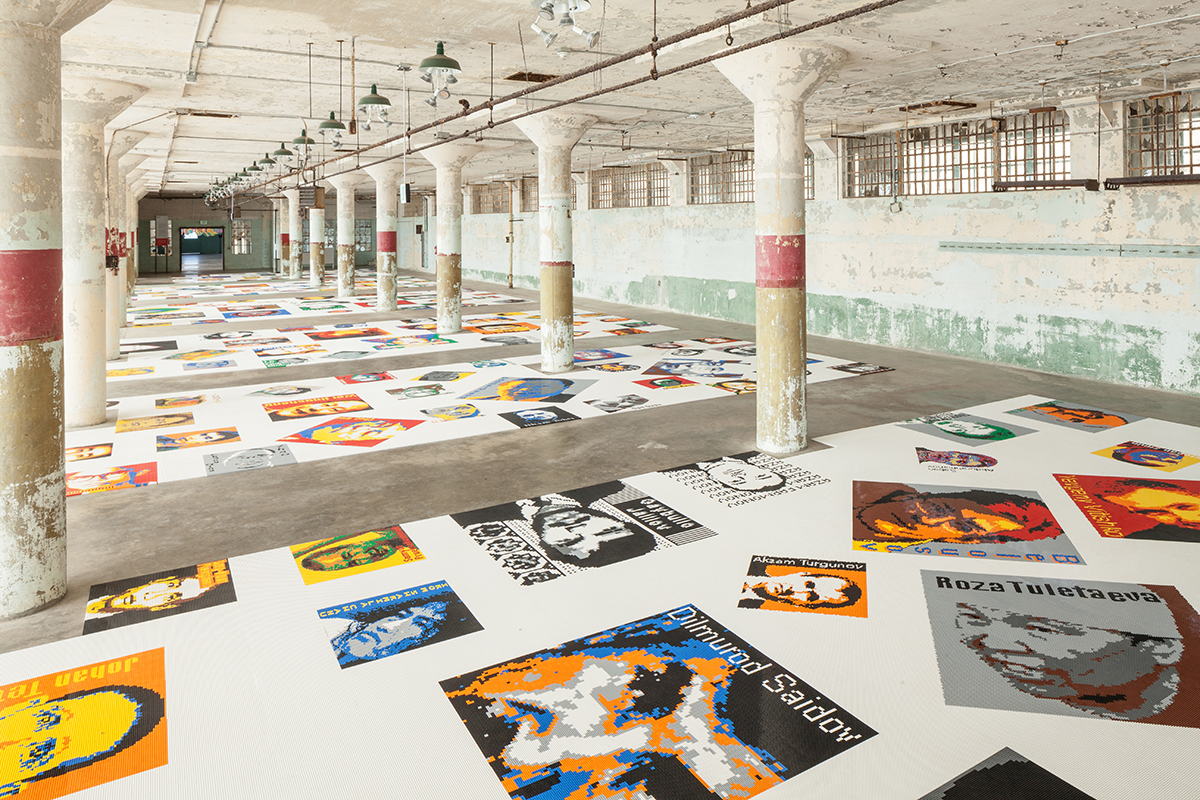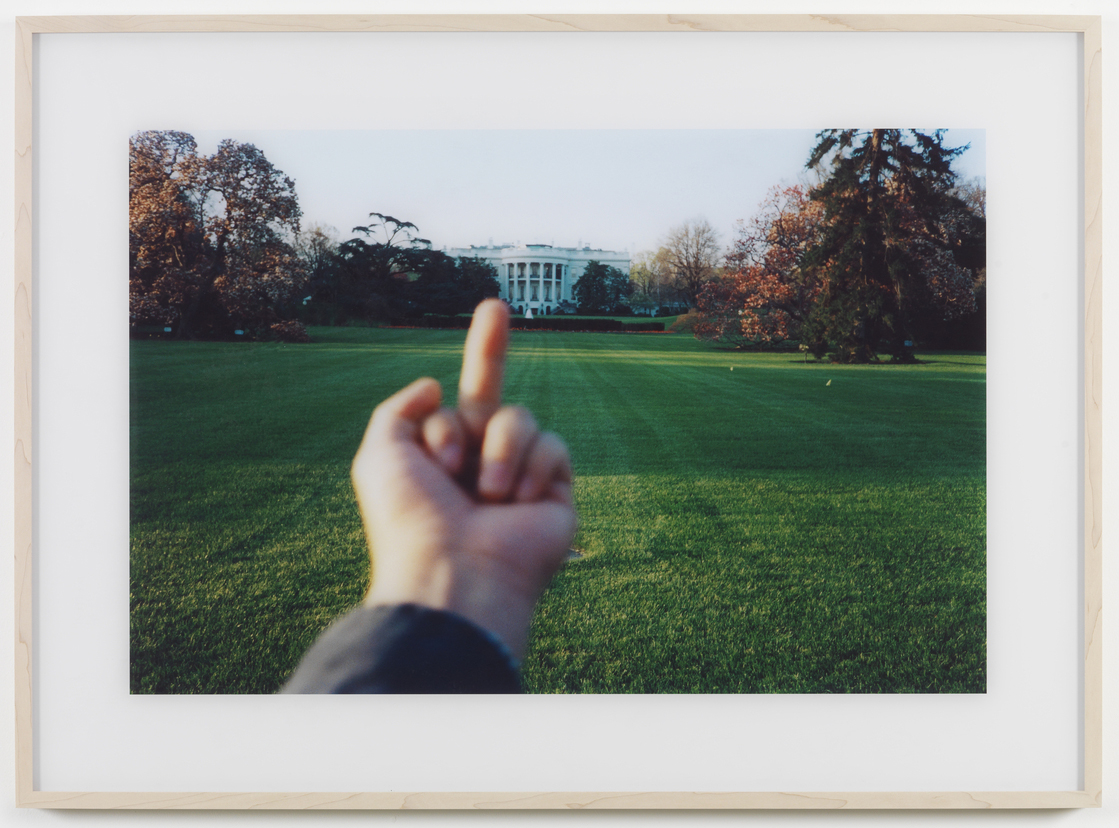The artist and human rights activist discusses the power of writing, the poetry of his father, and the artworld’s self-serving ideologies
Contemporary artist and human-rights activist Ai Weiwei came to international prominence for his open criticism of the Chinese government’s autocratic rule and its human rights policies, a position that resulted in the state’s efforts to silence his condemnations via sustained intimidation, a 2009 attack by the police that left him with a brain haemorrhage and a three-month imprisonment in 2011. Following the unannounced demolition of his Beijing studio in 2018 by local authorities, Ai relocated to Berlin. His memoir 1000 Years of Joys and Sorrows (2021) tells the story of China’s political and social history over the last century through the intertwined experiences of Ai and his father, the renowned modernist poet Ai Qing, who was exiled for two decades, including a period of hard labour in Xinjiang.
ArtReview How did you approach writing 1000 Years of Joys and Sorrows?
Ai Weiwei I always need to be balanced: to not get too emotionally involved and to be a little bit cool in tone. Otherwise the emotions are often overwhelming. On the one hand because the book spans 100 years of China’s history (and that’s a large period to cover) – but on the other because it reflects the history of two people: me and my father. I wanted it to be balanced so that it wasn’t too much about us, but rather sets our stories within a historical context.
AR How do you see the relationship between writing and making art?
AWW Ideally they should be one. As someone who has always been interested in conceptual art, I have always thought the form and concept should be undivided. It would be too arrogant or misleading to just give a form without a clear conceptual interpretation of the work. If it’s just about the words, it can be too obvious and dry: it doesn’t have charm. It needs to be balanced. Artworks can have specific meanings but can be vague and abstract at the same time. For me, writing is like a clear measurement of how far you can go with an idea: it’s black words on white paper; there’s a clear definition.
AR You’ve previously said that you hate ‘hidden meanings’. But your artwork does have a lot of hidden meanings…
AWW That’s the nature of art. It has to be able to be interpreted by itself and often it has multiple meanings. But that’s why I need to write. For me, writing is part of the art practice because it sets a clear meaning. However, it doesn’t have the same emotion as the artwork. That’s why I have to have both.

AR Your father, Ai Qing, was a renowned modernist poet, and in your book you mention these handwritten messages that were placed in public known as Big-character Posters, some examples of which were used by the state to denounce your father, but also one written anonymously by someone called Mechanic No. 0538, who used this format to criticise Mao Zedong – did language play a role in your becoming an artist and the process behind your practice?
AWW I think language has had a very profound impact on my work. When my father wrote poetry he was very careful in selecting his vocabulary, as are all poets. So that method of using a limited number of words to carry a powerful idea has always been very attractive to me – to see how language functions. I think, with any form of art practice, control is a crucial skill. So choosing words, form, materials carefully is the best means of expression. And expression itself is a selection of emotions and concepts. That process reflects the uniqueness of any individual work. It’s not about fitting all your ideas into one thing, but about reducing it and in fact excluding certain emotions and concepts.
AR Is that opposite to the way you grew up absorbing words and phrases used in Communist propaganda that were taught to you at school? Because there was an expectation that you would accept these ideas given by the state without question?
AWW Yes. I think it’s about trying to limit yourself from becoming another kind of propagandist. It’s about saying something carefully but also acting on it. And to act on the ideas is crucial, otherwise they just become antiwords. They function with no meaning.

AR How do you act on your ideas?
AWW I try to use different media: writing for social media, making videos, films and images, installations or even using pieces of Lego. Firstly, there is a challenge in understanding a particular medium; it takes a great effort to learn to control materials – whether it’s porcelain-making or Chinese carpentry – as well as knowledge of how these materials have been used throughout history. Secondly, you have to find the right material for the right concept. For example I used Lego for Trace (2014), a series of portraits of political prisoners, because it was necessary to give all the images the same kind of quality; at the same time, it was important to show they are distinct from one another – and Lego felt like the perfect medium for this. Similarly, with Sunflower Seeds (2010), porcelain has a huge tradition in Jingdezhen [where the work was fabricated by 1,600 artisans over a period of two-and-a-half years]: every woman knows how to make porcelain, which involves a very sophisticated process, but they make them just like they make dumplings. That’s the beauty of it. You have one hundred million porcelain sunflower seeds, but at the same time, it’s just like how every Chinese household would put dumplings in their wok and boil it. I still think of it as a miracle. But in every artwork, each different medium takes the same kind of effort to make sure that the aesthetic and moral work together to communicate an idea. To act on an idea is to make art, because the fight for freedom is part of freedom.

AR And what’s been your most important act so far?
AWW The most important thing I have done is to set up different ways of communicating social and political issues, and not just doing something that is self-indulgent, but rather to test if that expression really functions as a way of reflecting humanity and human dignity. If you took away my writing – the blogs, the social media messages, the book – my so-called artwork would fall apart. It’s like flesh and bones. To be alive, we have to have these connected structures of bones and tissue. That’s how my art comes alive.
AR Do you think your written ideas have a greater impact than your artworks?
AWW That is very hard to measure, partly because this book has just come out. I used to think people liked watching films, and I made so many films. But it depends on the circumstance, because in China, people love to watch films, but in the West, no one goes to theatres anymore – they just react quickly to social-media images. So the book really hasn’t been tested yet in the West. I used to write blogs in China, which were extremely popular. I believe that is the reason for the police brutality and attention from the state. If I had just made the artworks, I wouldn’t have had a problem. Even in detention, the interrogators never asked me about my artworks, except for when I flipped the finger at Tiananmen [Study in Perspective – Tiananmen, 1995]. I told them I did it to the White House too, but the interrogator said, ‘I’m a Chinese policeman, I’m taking care of my duties, and if you did that to the White House, the US police should take care of that’. So, basically, in prison they read my blogs to me as evidence of subverting state power; the texts were critical of the Chinese government and of the party. They even asked me to reread them, and asked me if I agreed with their judgment. I said, ‘I do.’


AR Do you feel there’s a connection between your and your father’s writing?
AWW Well, his writing was very calm with good intentions, and my writing is quite brutal and harsh. He faced 20 years of exile; the police told me that I’d have been killed if I had been writing during that time. But it’s very clear that our experiences correlate in some ways, I think.
My father went to Paris before he was twenty years old, to become an artist and poet; I went to New York to study. We have both been subject to the enforcement of state laws as individuals who have spoken our minds. I feel proud to be identified as an individual who can still defend freedom of expression.
AR Since moving to the West, do you see any ways in which the power structures here reflect some of those in China?
AWW I think China is clearly a very authoritarian society, and that has been the history of the country for 2,000–3,000 years. It never really changed. But for the past 200 years, the West has undergone an Industrial Revolution, and before that there was the Renaissance. Democratic systems were established in the West, but capitalism is a competing structure that creates different problems. In the West, on the surface, there’s liberty and individual freedom and an encouragement of people’s so-called creativity, but the world is so much controlled by corporate culture that those ideas are economically challenged because the corporate powers hide within the political, educational and media structures. So here we’re facing a very different structural problem.
AR And how does that impact the artworld?
AWW I think the artworld is basically dominated by certain ideologies that are self-serving, and capital-oriented. Artworks have to be recognised by important dealers and galleries, and have to be bought by collectors, which might then be donated to museums. It means sacrificing a huge amount of education and effort and creativity to fit into that system, in which it seems impossible to achieve success. In the West, education is fixated on telling people how to become successful – those ideas are taught in school education and through mainstream value judgements. That is the problem. It’s a pollutant, and opposite to the idea of the individual.
From the December 2021 issue of ArtReview
